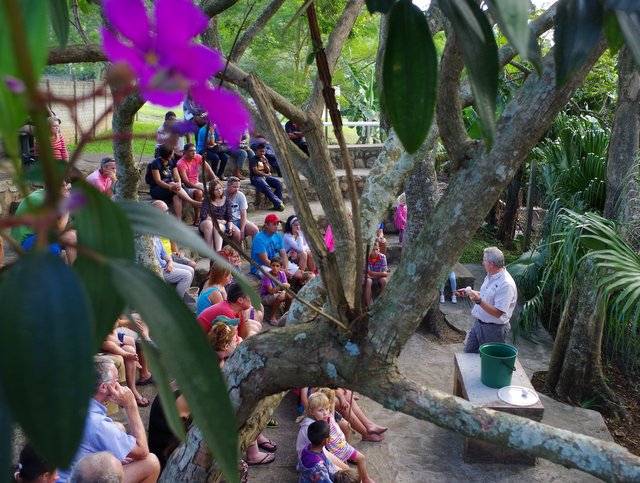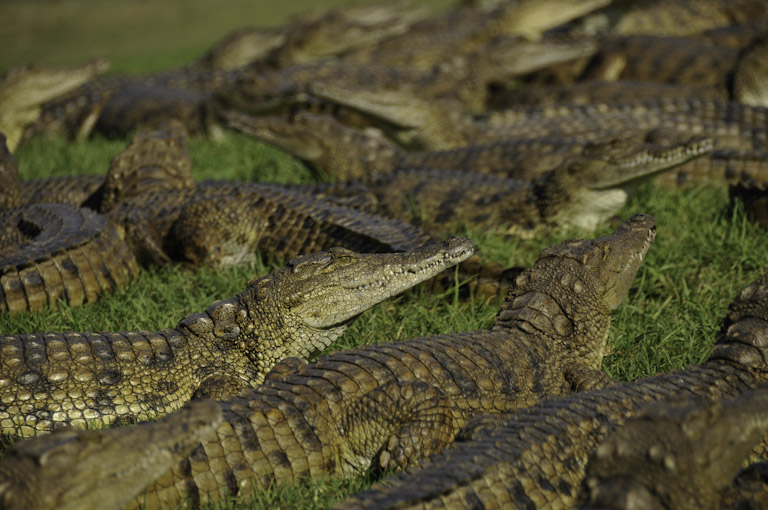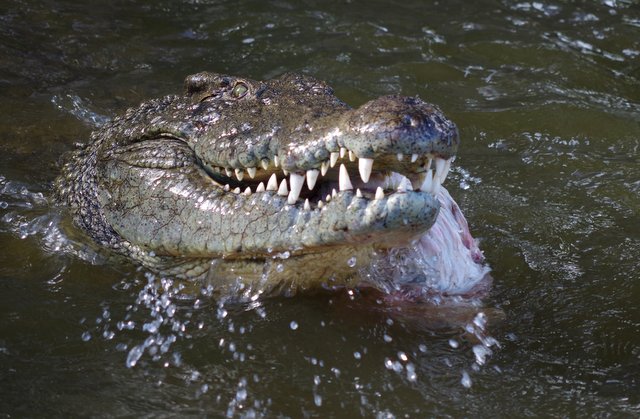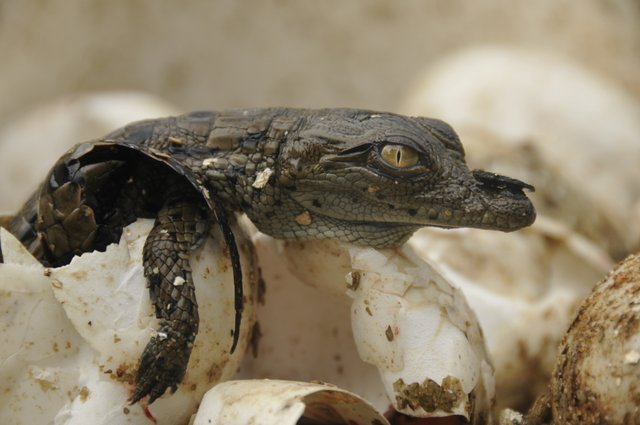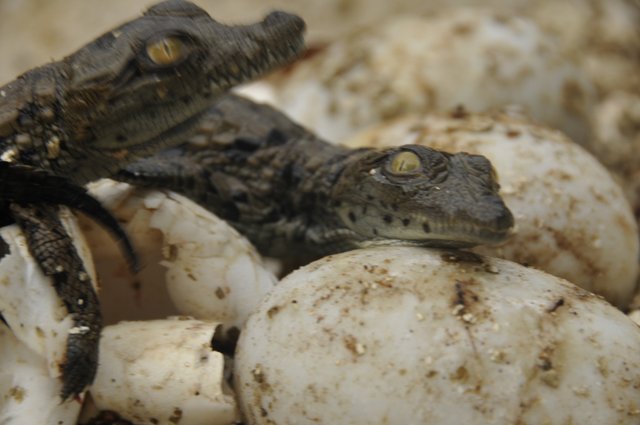Crocodiles
What was started initially as a tourist attraction based on the success of similar facilities world-wide soon developed into a successful breeding facility!
Warm subtropical conditions on the South Coast together with ideal crocodile accommodation have proved ideal for crocodile breeding and thousands of crocodiles have been produced at Riverbend since the first hatchlings were born in the summer of 1983. Approximately 6000 crocodiles hatched at Riverbend Crocodile Farm each year are transferred shortly after hatching to a commercial facility situated in the Natal Midlands.
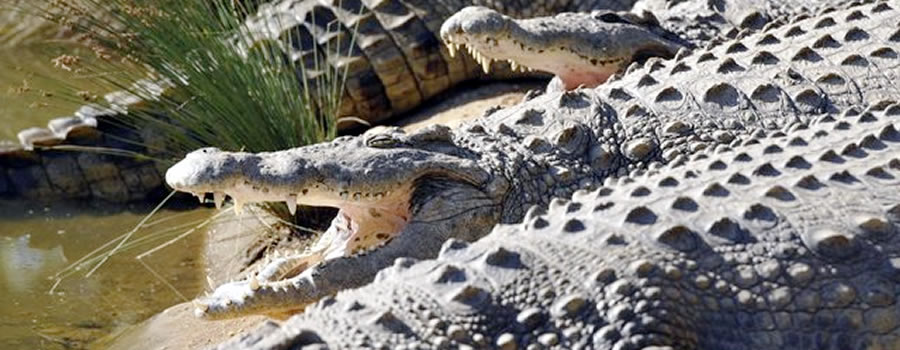
The crocodile feeding presented is particularly spectacular in summer when the crocodiles go into a feeding frenzy consuming as much as five kilograms of either beef or chicken each.
Over the last 20 years Howard Kelly, a member of the IUCN Crocodile Specialist Group, has presented the visitors to Riverbend Crocodile Farm with a fascinating presentation which covers topics ranging from crocodile ecology to the impact of crocodiles on human populations in Africa. Having worked with crocodiles for more than 30 years Howard has imparted some fascinating knowledge to thousands of visitors.
Crocodile hatching demonstrations in January and February have become legendary on the South Coast and are the highlight for many visitors when Howard takes people through this natural phenomenon the step by step. Thousands of visitors return each year just to experience this wonderful natural phenomenon.
Interesting facts about Crocodiles
Interestingly, the last wild nile crocodile (crocodylus niloticus which are the only endemic crocodiles in South Africa) recorded on the lower South Coast was a notorious crocodile which had been terrorizing bathers on the Uvongo beach and which was finally shot in 1864 at the base of the Uvongo waterfall.Historical research shows that the nile crocodile was found in all river systems north of the Buffalo river in East London while there is empirical evidence suggesting that that all of the major rivers on the South Coast boasted healthy crocodile populations in the early 1800’s.





